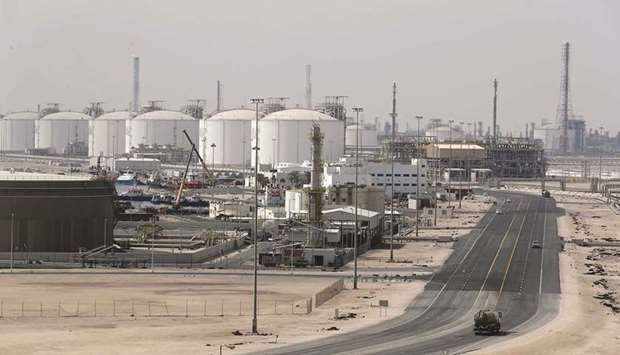Capital Intelligence Ratings (CI) has affirmed the long-term foreign currency rating (LT FCR) and long-term local currency rating (LT LCR) of Qatar at ‘AA-’.
The sovereign’s short-term FCR (ST FCR) and short-term LCR (ST LCR) have been affirmed at ‘A1+’. The outlook for the ratings remains "stable".
The ratings are supported by substantial government assets under the management of the sovereign wealth fund, the Qatar Investment Authority (QIA), very large hydrocarbon reserves, a high degree of expenditure flexibility, and low domestic political risk.
The ratings are constrained by the government’s large contingent liabilities, the economy’s limited diversification, and substantial geopolitical risks.
Although the Covid-19-related decrease in hydrocarbon revenues has contributed to a temporary deterioration in Qatar’s public and external finances, CI continues to view fiscal and external strength as strong due to the very high level of government external assets, which have been built up thanks to a long run of large budget surpluses over the past two decades (2000-19 average: 8.1% of gross domestic product).
The QIA’s total assets are estimated to be in the region of $300bn, or 210% of GDP in 2020.
Furthermore, CI expects both the current account position and government budget balance to improve over the forecast horizon, based on a moderate increase in hydrocarbon prices and a rebound in liquefied natural gas (LNG) export volumes.
The current account is forecast to register a surplus of 1.2% of GDP in 2021 against a deficit of 2.9% in 2020. The budget surplus is forecast to rise to 4.2% of GDP in 2021 from 1.7% in 2020.
Qatar is the only GCC (Gulf Co-operation Council) country, which registered a budget surplus in 2020 as the shortfall in hydrocarbon revenues was partially offset by large cuts in public spending.
"We note that the government has considerable fiscal leeway since expenditure rigidities are less pronounced than in other GCC countries. A large share of government expenditure falls upon discretionary spending items such as public investment, and the relative size of the public wage bill is much smaller than in more populous GCC countries," CI said.
While the government has registered budgetary surpluses over the past years, gross government debt has increased due to several large international bond issues.
CI estimates gross government debt to have increased to a moderate-to-high 71.4% of GDP in 2020, from 56.2% in 2019, on the back of a $10bn international bond issue in April 2020 and a sharp contraction in nominal GDP.
"Going forward, CI’s baseline scenario anticipates debt dynamics to reverse and forecasts a decrease in government debt to 62.5% of GDP in 2022 as we expect budget surpluses to increase and the size of international bond issuances to decrease," the rating agency said.
The rating agency forecasts a rebound of real GDP growth to 2.7% in 2021 and 2.6% in 2022 based on expectation that LNG export volumes will recover, particularly in 2021.
Furthermore, non-hydrocarbon growth is forecast to strengthen over the next two years as CI expects the gradual lifting of international travel restrictions and a rebound of global economic growth to raise external demand for exports of manufacturing goods and tourism services.
The rating agency expects the recent end of Gulf rift to enhance regional tourist arrivals in Qatar.
Qatar’s ratings benefit from very large hydrocarbon reserves (around 1.5% of global oil and 12.9% of global gas reserves) and associated export capacity, which in turn provides the government with substantial financial means.
"Given the large hydrocarbon exports and rather small population, GDP per capita is estimated at an extremely high $51,794 in 2020," it said.
The sovereign’s short-term FCR (ST FCR) and short-term LCR (ST LCR) have been affirmed at ‘A1+’. The outlook for the ratings remains "stable".
The ratings are supported by substantial government assets under the management of the sovereign wealth fund, the Qatar Investment Authority (QIA), very large hydrocarbon reserves, a high degree of expenditure flexibility, and low domestic political risk.
The ratings are constrained by the government’s large contingent liabilities, the economy’s limited diversification, and substantial geopolitical risks.
Although the Covid-19-related decrease in hydrocarbon revenues has contributed to a temporary deterioration in Qatar’s public and external finances, CI continues to view fiscal and external strength as strong due to the very high level of government external assets, which have been built up thanks to a long run of large budget surpluses over the past two decades (2000-19 average: 8.1% of gross domestic product).
The QIA’s total assets are estimated to be in the region of $300bn, or 210% of GDP in 2020.
Furthermore, CI expects both the current account position and government budget balance to improve over the forecast horizon, based on a moderate increase in hydrocarbon prices and a rebound in liquefied natural gas (LNG) export volumes.
The current account is forecast to register a surplus of 1.2% of GDP in 2021 against a deficit of 2.9% in 2020. The budget surplus is forecast to rise to 4.2% of GDP in 2021 from 1.7% in 2020.
Qatar is the only GCC (Gulf Co-operation Council) country, which registered a budget surplus in 2020 as the shortfall in hydrocarbon revenues was partially offset by large cuts in public spending.
"We note that the government has considerable fiscal leeway since expenditure rigidities are less pronounced than in other GCC countries. A large share of government expenditure falls upon discretionary spending items such as public investment, and the relative size of the public wage bill is much smaller than in more populous GCC countries," CI said.
While the government has registered budgetary surpluses over the past years, gross government debt has increased due to several large international bond issues.
CI estimates gross government debt to have increased to a moderate-to-high 71.4% of GDP in 2020, from 56.2% in 2019, on the back of a $10bn international bond issue in April 2020 and a sharp contraction in nominal GDP.
"Going forward, CI’s baseline scenario anticipates debt dynamics to reverse and forecasts a decrease in government debt to 62.5% of GDP in 2022 as we expect budget surpluses to increase and the size of international bond issuances to decrease," the rating agency said.
The rating agency forecasts a rebound of real GDP growth to 2.7% in 2021 and 2.6% in 2022 based on expectation that LNG export volumes will recover, particularly in 2021.
Furthermore, non-hydrocarbon growth is forecast to strengthen over the next two years as CI expects the gradual lifting of international travel restrictions and a rebound of global economic growth to raise external demand for exports of manufacturing goods and tourism services.
The rating agency expects the recent end of Gulf rift to enhance regional tourist arrivals in Qatar.
Qatar’s ratings benefit from very large hydrocarbon reserves (around 1.5% of global oil and 12.9% of global gas reserves) and associated export capacity, which in turn provides the government with substantial financial means.
"Given the large hydrocarbon exports and rather small population, GDP per capita is estimated at an extremely high $51,794 in 2020," it said.




